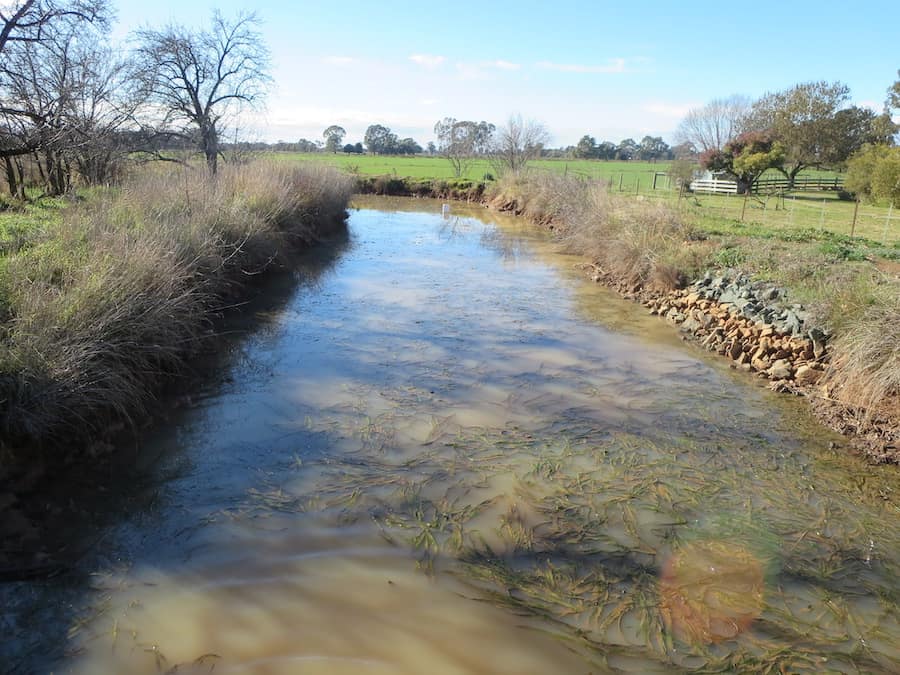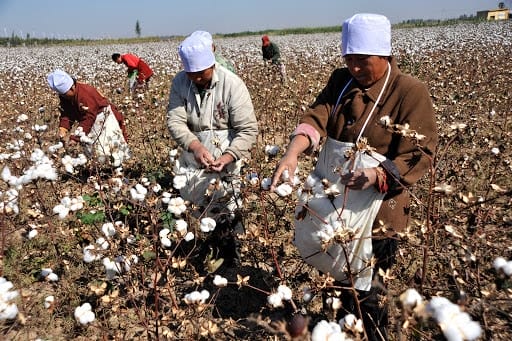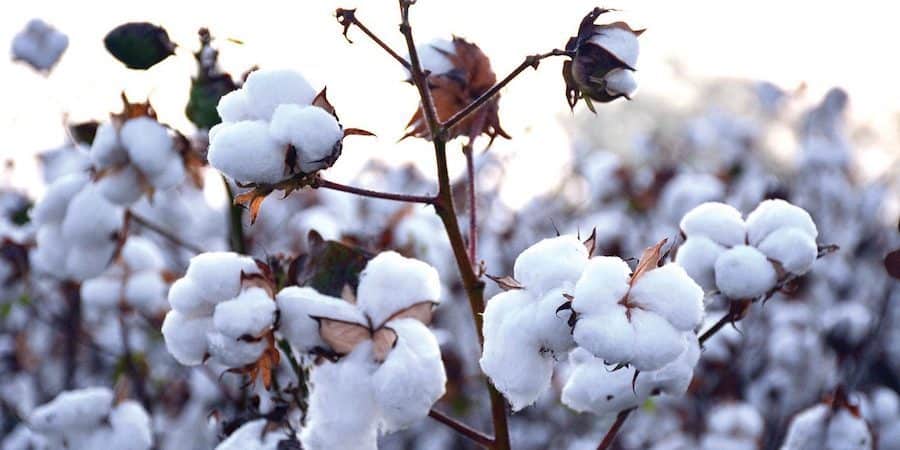Some skepticism has arisen regarding whether or not organic cotton should be considered a more sustainable choice. To explore the sustainability of organic cotton we’re going to compare it to its counterpart: conventional cotton. Conventional cotton still accounts for 99% of cotton production and is one of the most popular fabrics in the world.
Of course, organic cotton is also a more sustainable choice when compared to other popular fabrics such as polyester. For starters, organic cotton doesn’t shed microplastics and it’s better for recycling. Check out our fabric guide to see more on how it compares to other fabrics.
Now, let’s get into the finer details of conventional cotton vs. organic cotton.
The short answer: when considering the environmental and human impacts of organic cotton, it is a more ethical and eco-friendly choice compared to other materials, and a good option when shopping for new clothes.
Water Pollution from Cotton Farming

Conventional cotton farming accounts for 16.1% of the world’s insecticide sales and 5.7% of global pesticide consumption. This means conventional cotton can be a dirty crop for our soil and water supplies.
Organic cotton, which is grown without harmful chemicals, reduces water pollution by 5x compared to conventional cotton. Reducing runoff from pesticides protects both the ecosystems and people that depend on the local water supply.
Global Warming Impacts of Cotton Production
In addition to polluting our soil and water, pesticides are also a contributor to greenhouse gas emissions in agriculture. Pair pesticide usage with soil degradation and you start to see how conventional cotton has a larger carbon footprint.
Organic cotton is better than conventional cotton for global warming because healthier soil means it can store more CO2. Organic farming stores about 2 tonnes more carbon per soccer field, on average.
“If Europe’s farmland all followed organic principles, agricultural emissions could drop by 40-50% by 2050.”
Soil Association
Workers Health and Safety

When we talk about sustainability, we can’t just talk about environmental impacts. Fabrics must be supported by humane labor practices that ensure the health and safety of farmers to truly be sustainable.
The toxic chemicals used in traditional cotton farming pose a massive health risk to farmers around the world. There is a link between consistent inhalation and consumption of these chemicals and cancer, neurological diseases, and reproductive complications.
By purchasing items made of organic cotton, consumers are not only supporting a more environmentally conscious production method, they’re also helping protect the health of cotton farmers worldwide.
Cotton’s Water Consumption

According to the most current available data, it takes 1,931 liters of irrigation water and 6,003 liters of rainwater to produce enough cotton for a t-shirt and pair of jeans. Is this a lot?
“Cotton’s water consumption is not high relative to many other crops, and it varies dramatically from place to place.”
Transformers Foundation
Cotton has often been referred to as a thirsty crop, including here on our blog, with one of the most widely circulated data points saying it takes 20,000 liters to produce the above mentioned shirt and jeans. Ultimately this data point was dated and debunked by new research.
So what’s better for water consumption: conventional cotton or organic cotton? There is no significant difference.
A widely circulated data point, put forth by Textile Exchange, suggested organic cotton uses far less water than conventional cotton. Part of the reason this data point was debunked is because it compared the two fabrics under specific farming conditions, conditions that are not always met when generally comparing the two types of cotton.
Imperfect Solutions
If there’s one thing we can be sure of it’s that nothing is 100% sustainable. That being said, the point isn’t to be perfect: the point is to make better choices when we can, and organic cotton is a much better choice!
Many sustainable fashion advocates will offer up sustainable fabrics like hemp or tencel as alternatives to organic cotton. While these are also good fabrics, they aren’t currently scalable to the degree that they could replace cotton. Organic cotton, hemp, and tencel are all better more eco-friendly choices when buying clothes.
As consumers become more interested in sustainable markets, it’s even more important to research the brands you buy from. Know the difference between a brand that’s making a positive difference in sustainable fashion, and a brand that’s greenwashing.
Moving in the Right Direction

Organic cotton is a meaningful step in the right direction. Sustainably farmed organic cotton is a far preferable alternative to most large scale fabric options.
Organic cotton currently makes up around 1% of the world’s global cotton production, while the other 99% uses harmful pesticides, has a larger carbon footprint, and can be harmful to farmers.
As more brands switch to organic cotton, it means fewer pesticides, safer cotton farmers, and it’s better for global warming. Organic cotton also beats synthetics because it’s not derived from fossil fuels, is better for recycling, and it’s free from microplastics. That’s something we need to get behind.
This article was written in response to a question we received from one of our readers. Have any more questions that you’d like us to investigate? Feel free to comment below!
Article updated 6/21/2022.

Lily Rosen Marvin studies English and Creative Writing at the University of Iowa. When she’s not writing about sustainable fashion, Lily can be found hiking, reading outside, or binge-watching 30 Rock.











9 thoughts on “Is Organic Cotton Sustainable? Here’s What You Need to Know”
Great article! I always like reading articles about the environment that are actually fact-based. It’s a shame what non-organic cotton is causing our water sources, and I really wasn’t aware of it.
Completely agree! Excited about the move towards not just organic cotton but regenerative organic cotton.
Thank you! I’ll be sharing this!
Thanks for your support!
Thank you for this article. It is much appreciated.
Thanks for reading!
Thanks for sharing such an informative article on sustainable clothing. Great article!
You’re welcome 🙂
are field workers at higher risk of malaria in organic vrs inorganic cotton fields